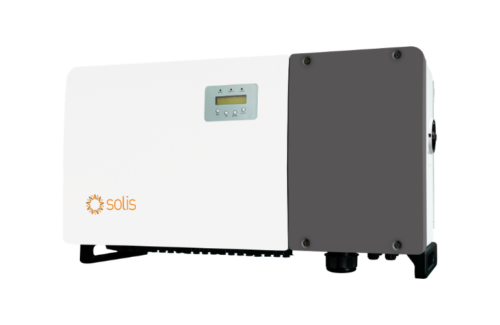 String inverters are a common choice for C&I applications for their mounting flexibility and maintenance simplicity. Ginlong Solis recently released a new 1,000-V three-phase string inverter for the C&I market that allows for high DC oversizing and maximum efficiency. Solar Power World asked Ginlong USA general manager Jing Tian and three-phase inverter product manager Bernie Grant for installation insights on its new inverter series.
String inverters are a common choice for C&I applications for their mounting flexibility and maintenance simplicity. Ginlong Solis recently released a new 1,000-V three-phase string inverter for the C&I market that allows for high DC oversizing and maximum efficiency. Solar Power World asked Ginlong USA general manager Jing Tian and three-phase inverter product manager Bernie Grant for installation insights on its new inverter series.
Solar Power World: Why are Solis (75-100)K-US-5G inverters ideal for commercial rooftops?
Jing Tian: These are the largest 1,000-V solar inverters available in the United States, making them the highest performing and most economical choice for commercial rooftops. The high performance is enabled by a 13 A string input current, which makes these inverters compatible with high-power bifacial modules and 600-W modules. They operate at 99% maximum efficiency. And, they are rated for 1.5:1 DC to AC ratio, or more, which enables system designers to oversize and produce more energy at early hours and later in the day. These inverters also provide the design flexibility to fully utilize rooftop space, reduce shading, eliminate orphan strings and produce the most energy possible with the space available. They are reliable, bankable, economical and easy to maintain.
SPW: What is the ideal mounting setup of this inverter?
Bernie Grant: The ideal setup is to put the inverter on an exterior wall at ground level so that technicians don’t need to access the roof in order to monitor and maintain. With that said, there are many potential mounting solutions, including rack mounting in the array and mounting on a parapet wall, allowing for considerable design flexibility. The only requirement is that the inverter can only be mounted vertically (or laid back 15° off vertical).
SPW: What O&M functions does this inverter have and why are they important?
Grant: The 75-100 kW series is designed for a 25-year life span and beyond, with many features that facilitate easy maintenance. Remote access and isolation of issues as they arise are the keys to streamlined O&M. These inverters have I/V Curve Scan, which has significant advantages over traditional IV curve tracing, including sharply decreased site evaluation time, and negligible power generation loss. I/V curve scanning does not require any additional or specialized equipment or specially trained personnel to perform. String level monitoring with high level of detail allows you to identify and isolate potential issues quickly. Remote control access reduces the need for roof access. Segmented DC switches allow operators to take one string at a time offline and continue generating power from the others while maintenance is conducted. And finally, iAFCI performs first level fault isolation automatically by reporting arcing on the MPPT level instead of the inverter level.
SPW: What safety features are included in Solis (75-100)K-US-5G inverters?
Grant: Anytime you are putting solar equipment on a rooftop, safety has to be at the forefront of product design. Solis uses only Tier One supplier components, so that you can be assured you are getting the most reliable and highest quality product. As I mentioned, we have made an innovative upgrade to our iAFCI intelligent Arc Fault Interrupter, which produces fewer false alarms, and increases the confidence of the building owners and occupants. By using the string monitoring function as the basis for the detection, less time is spent identifying and isolating the issue. These inverters also have optional SunSpec or Tigo module level rapid shutdown (MLRS) transmitters integrated into the inverter, so that you can have a UL-certified, code-compliant transmitter solution ready for plug and play with your inverter.
SPW: What installation tips can you offer installers who choose this product?
Grant: First and foremost is to install the inverters in a place that is easily accessible. Having access to the inverters without the need for special permission from site owners goes a long way in the O&M process. For most, O&M means repair only, but there are many times where simple operational verification is necessary, especially if the site owner has questions on performance. These inverters are designed for an easier installation process with the MC4 connectors, segmented DC switches and separate AC cabinet. From the integrated MLRS transmitters to the design flexibility of variable string lengths and multiple options for inverter placement, you will find that using the 1,000-V 75-100 kW inverter in your system design allows for streamlined installation.

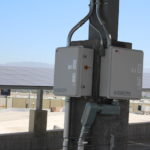
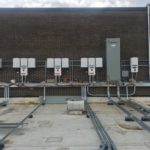
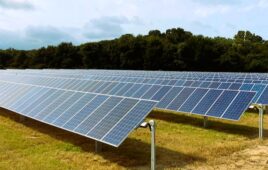

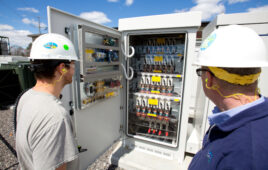
“They operate at 99% maximum efficiency. And, they are rated for 1.5:1 DC to AC ratio, or more, which enables system designers to oversize and produce more energy at early hours and later in the day.”
Get this kind ability in ‘smaller’ 240VAC house inverters to create more robust longer lasting systems overall.
“The 75-100 kW series is designed for a 25-year life span and beyond, with many features that facilitate easy maintenance. Remote access and isolation of issues as they arise are the keys to streamlined O&M.”
This is the ‘needed’ technology longevity to create the all encompassing 25 year warranty (system). This allows one to imagine a day when you can buy a solar PV system for your home or business that has been designed to be an ‘overbuilt’ system that can last 25 years or more in service and become a legacy product in every home around the World. Now, the next step is cheap long lasting energy storage.